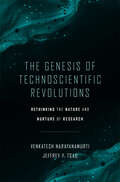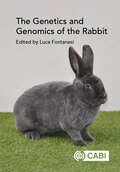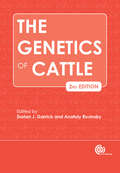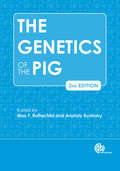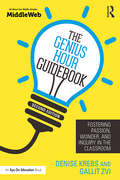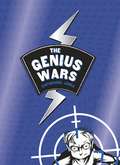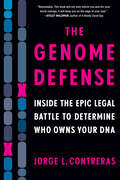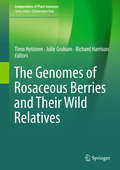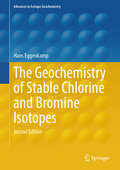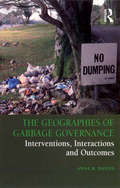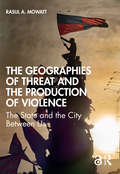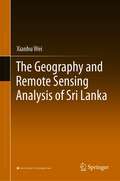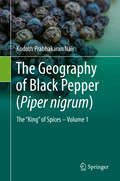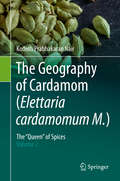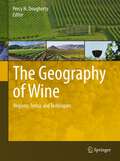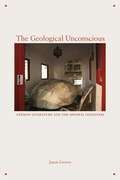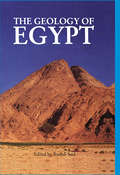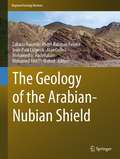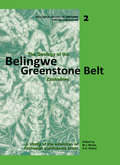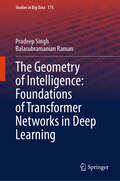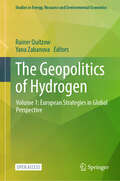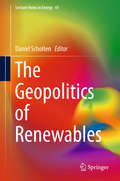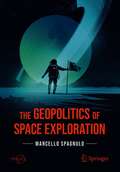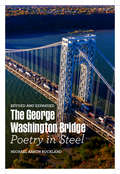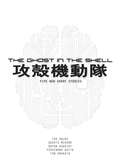- Table View
- List View
The Genesis of Technoscientific Revolutions: Rethinking the Nature and Nurture of Research
by Venkatesh Narayanamurti Jeffrey Y. TsaoResearch powers innovation and technoscientific advance, but it is due for a rethink, one consistent with its deeply holistic nature, requiring deeply human nurturing. Research is a deeply human endeavor that must be nurtured to achieve its full potential. As with tending a garden, care must be taken to organize, plant, feed, and weed—and the manner in which this nurturing is done must be consistent with the nature of what is being nurtured. In The Genesis of Technoscientific Revolutions, Venkatesh Narayanamurti and Jeffrey Tsao propose a new and holistic system, a rethinking of the nature and nurturing of research. They share lessons from their vast research experience in the physical sciences and engineering, as well as from perspectives drawn from the history and philosophy of science and technology, research policy and management, and the evolutionary biological, complexity, physical, and economic sciences. Narayanamurti and Tsao argue that research is a recursive, reciprocal process at many levels: between science and technology; between questions and answer finding; and between the consolidation and challenging of conventional wisdom. These fundamental aspects of the nature of research should be reflected in how it is nurtured. To that end, Narayanamurti and Tsao propose aligning organization, funding, and governance with research; embracing a culture of holistic technoscientific exploration; and instructing people with care and accountability.
The Genetics and Genomics of the Rabbit
by Domenico Spina Cristiano Boiti Bernd Fischer Jianglin Fan Zsuzsanna Bosze Joana Abrantes Marielle Afanassieff Daniel Allain Andre Almeida Susana S. Araújo Manuel Baselga Agustin Blasco Paul Boettcher Gerard Bolet Darko Bosnakovski Samuel Boucher Samuele Bovo Gudrun A. Brockmann Luca Buttazzoni Cesare Castellini Pascale Chavatte-Palmer Peter Chrenek Veronique Duranthon Pedro José Esteves María-Luz García Hervé Garreau Elen Gócza Mélanie Gunia Pilar Hernández László Hiripi Arata Honda Adriana Kolesárová Ana Lemos de Matos Rose Mage Manolis Matzapetakis István Nagy Clive Page Mariana Palma Miriam Piles Andrea Rau Andreas Ritsch Claire Rogel-Gaillard Jun Pablo Sanchez Maria Antonia Santacreu Pierre Savatier Giuseppina Schiavo Ina Sternstein Zsolt Szendro Valerio Joe UtzeriRabbits have many uses - as well as being cherished pets, they are bred for their meat and fur, and as laboratory animals. Understanding their genetics and genomics is key to their production and, equally, to their care, welfare and health. Beginning with an introduction to the rabbit, including key information on their evolution, domestication and breed types, this book then concentrates on the genetics and genomics of this valuable animal. This book covers: - Cytogenetics, genetic maps and QTL mapping; - Immunogenetics; - Genetics of coat colour, meat, fibre and fur production, reproduction, disease resistance and more. Concluding with practical applications such as creating transgenic and genome edited rabbits, biotechnical applications and the rabbit as a biomedical model, this book brings this important topic fully up-to-date. It provides an indispensable resource for animal and veterinary researchers and students, as well as rabbit breeders and laboratory scientists.
The Genetics of Cattle 2nd edition
by Anatoly Ruvinsky Dorian GarrickSince the time of domestication more than 10,000 years ago, cattle have played an increasingly crucial role in the development of human civilizations. Progress has been quite remarkable since the turn of the century; the sequencing of the bovine genome in 2009 launched new avenues for furthering our understanding of theoretical and practical aspects of cattle genetics. Covering a vast array of questions, this book reviews major topics from molecular and developmental genetics, disease resistance and immunogenetics to genetic improvement of dairy and beef breeds, addressing all current problems in the field. This second edition includes a new team of authors and completely new chapters on the genetics of fat production, nutrition, feed intake and efficiency, growth and body composition. Fully updated throughout, it provides a valuable resource on cattle genetics for researchers, breeders, veterinarians and postgraduate students.
The Genetics of the Pig (2nd edition)
by Anatoly Ruvinsky Max F. RothschildThe understanding of pig genetics and genomics has advanced significantly in recent years, creating fresh insights into biological processes. This comprehensive reference work discusses pig genetics and its integration with livestock management and production technology to improve performance.
The Genius Hour Guidebook: Fostering Passion, Wonder, and Inquiry in the Classroom
by Denise Krebs Gallit ZviPromote your students&’ creativity and get them excited about learning! In the second edition of this popular, practical book, authors Denise Krebs and Gallit Zvi show you how to implement Genius Hour, a time when students can develop their own inquiry-based projects around their passions and take ownership of their work. Brought to you by MiddleWeb and Routledge Eye On Education, the book takes you step-by-step through planning and teaching Genius Hour. You&’ll learn how to guide your students as they: ● inspire learning and brainstorm wonders; ● develop inquiry questions based on their interests; ● conduct research and experiments about their topic of choice; ● create presentations to teach their fellow students in creative ways; and ● present their finished product for a final assessment. This edition includes new chapters on managing your classroom projects and recommended books. Throughout the book you will find voices from the Genius Hour community sharing real life stories and inspiration. Appendices contain handy FAQs and ready-made lessons and resources. In addition, a companion website, www.geniushourguide.org, offers bonus materials and regular updates to support you as you implement Genius Hour in your own classroom.
The Genius Wars
by Catherine JinksBoy-genius Cadel Piggot has a new name (Cadel Greenaius), a new family, and a new life. No more illegal hacking, no more false identities, and most of all, no more Prosper English. But when his best friend Sonja is attacked, it's up to him to figure out who was behind it. Before he knows it, Cadel is crossing oceans and continents, barrelling back into the depths of the criminal activity he thought he'd left behind, and coming face to face with Prosper English once again. Can Cadel track down Prosper before it's too late? And what rules will he have to break in the process?
The Genome Defense: Inside the Epic Legal Battle to Determine Who Owns Your DNA
by Jorge L. ContrerasIn this riveting, behind-the-scenes courtroom drama, a brilliant legal team battles corporate greed and government overreach for our fundamental right to control our genes. When attorney Chris Hansen learned that the U.S. government was issuing patents for human genes to biotech companies, his first thought was, How can a corporation own what makes us who we are? Then he discovered that women were being charged exorbitant fees to test for hereditary breast and ovarian cancers, tests they desperately needed—all because Myriad Genetics had patented the famous BRCA genes. So he sued them. Jorge L. Contreras, one of the nation&’s foremost authorities on human genetics law, has devoted years to investigating the groundbreaking civil rights case known as AMP v. Myriad. In The Genome Defense Contreras gives us the view from inside as Hansen and his team of ACLU lawyers, along with a committed group of activists, scientists, and physicians, take their one-in-a-million case all the way to the U.S. Supreme Court. Contreras interviewed more than a hundred key players involved in all aspects of the case—from judges and policy makers to ethicists and genetic counselors, as well as cancer survivors and those whose lives would be impacted by the decision—expertly weaving together their stories into a fascinating narrative of this pivotal moment in history. The Genome Defense is a powerful and compelling story about how society must balance scientific discovery with corporate profits and the rights of all people.
The Genomes of Rosaceous Berries and Their Wild Relatives (Compendium of Plant Genomes)
by Richard Harrison Timo Hytönen Julie GrahamThis book collates the most up to date information on Fragaria, and Rubus genomes. It focuses on the latest advances in the model system Fragaria vesca, along with the allied advances in economically important crops. Covering both basic and applied aspects of crop genomics, it illustrates strategies and resources for the study and utilization of genome sequences and aligned functional genomics resources.Rosaceous berries are collectively an increasingly important set of high-value global crops, with a trade value of over £2 billion dollars per annum. The rosaceous berries strawberry, raspberry and blackberry share some common features at the genome scale, namely a range of ploidy levels in each genus and high levels of heterozygosity (and associated inbreeding depression) due to self-incompatibility systems, dioecy, or multispecies hybridization events. Taken together, although the genomes are relatively compact, these biological features lead to significant challenges in the assembly and analysis of berry genomes, which until very recently have hampered the progress of genome-level studies.The genome of the woodland strawberry, Fragaria vesca, a self-compatible species with a homozygous genome was first sequenced in 2011 and has served as a foundation for most genomics work in Fragaria and to some extent Rubus. Since that time, building upon this resource, there have been significant advances in the development of genome sequences for related crop species. This, coupled with the revolution in affordable sequencing technology, has led to a suite of genomics studies on Fragaria and more recently Rubus, which undoubtedly aid crop breeding and production in future years.
The Geochemistry of Stable Chlorine and Bromine Isotopes (Advances in Isotope Geochemistry)
by Hans EggenkampThis book provides detailed information on the history, analysis and applications of chlorine and bromine isotope geochemistry. This largely extended 2nd edition has incorporated most research published between 2014 and 2023, and contains also significantly more information on the earliest experimental data obtained during the early 20th century. This 2nd edition describes isotope studies done on terrestrial samples, and also incorporates the fascinating chlorine (and bromine) isotope ratio investigations obtained from extraterrestrial and astronomical studies, and thus it shows the full extent of the current status of knowledge of this subject.
The Geographies of Garbage Governance: Interventions, Interactions and Outcomes
by Anna R. DaviesPreviously perceived as a local, technical issue for governments, waste management is now also a global, socio-political process involving complex patterns of multi-level governance. Yet these geographical complexities have not previously been considered in any detail. This book examines the neglected geographies of waste management, in particular, the integral processes of trans-localization and politicization that are emerging in waste networks. Illustrated by in-depth case studies from New Zealand and Ireland, it critically analyzes the interaction between political scales of governing waste, from the local to the supra-national level. It also looks at the impact of wider systems of governance, civil society and the private sector on waste management policy and practices. In doing so, the book provides a better understanding of waste governance and recommendations for better management of the waste sector in the future.
The Geographies of Threat and the Production of Violence: The State and the City Between Us
by Rasul A MowattThe Geographies of Threat and the Production of Violence exposes the spatial processes of racialising, gendering, and classifying populations through the encoded urban infrastructure – from highways cleaving neighbourhoods to laws and policies fortifying even more unbreachable boundaries. This synthesis of narrative and theory resurrects neglected episodes of state violence and reveals how the built environment continues to enable it today within a range of cities throughout the world. Examples and discussions pull from colonial pasts and presents, of old strategic settlements turned major modern cities in the United States and elsewhere that link to the physical and legal structures concentrating a populace into neighbourhoods that prep them for a lifetime of conscripted and carceral service to the State.
The Geography and Remote Sensing Analysis of Sri Lanka
by Xianhu WeiThis book presents a survey, dynamic monitoring and comprehensive analysis of Sri Lanka’s land, vegetation, surface water, ocean and other environmental resources, as well as its economic, transportation, urban, agricultural and tourism development. It offers readers accurate, systematic and comprehensive information on Sri Lanka’s ecological setting and socio-economic development. It also sheds light on policies for the protection of the environment and biodiversity.
The Geography of Black Pepper (Piper nigrum): The "King" of Spices – Volume 1
by Kodoth Prabhakaran NairThis book considers all aspects of black pepper from its growth, as a flowering vine, to how the dried fruit (peppercorn) is used as a spice and traded as a commodity. It is the economic mainstay of several India states and, principally, in Kerala State, with the Indian subcontinent being the largest black pepper producer. Indonesia has also emerged as a large producer of black pepper. Black pepper commands a leading position among the spices and has an immense commercial importance to world trade, finding its way onto the dining table of millions around the world, on the European and North American continents, and Japan. The use of black pepper ranges from a simple dietary component and flavour enhancer, to that of a spice with huge pharmacological benefits.
The Geography of Cardamom (Elettaria cardamomum M.): The "Queen" of Spices – Volume 2
by Kodoth Prabhakaran NairThis book catalogues the multi-scale impact of agronomy and economy on Cardamom, known as the “Queen” of spices. Cardamom is the second most important spice crop in the world, after Black pepper, known as the “King” of spices. Spices were the symbols of luxury and royalty, and cardamom was used in the manufacture of perfumes during the Greek and Roman times. It became one of the most important Oriental spices used in both Greek and Roman cuisine as well as its pharmacological applications. The book is divided into 15 chapters and concentrates on aspects of cardamom production and processing, the taxonomic aspects of cardamom, chemistry, pathology, entomology and is concluded with the future of cardamom. Special emphasis is given to the utility of “The Nutrient Buffer Power Concept”, a soil management technique in precise fertilizer management, especially with regard to Potassic fertilizers in cardamom production.
The Geography of Wine
by Percy H. DoughertyWine has been described as a window into places, cultures and times. Geographers have studied wine since the time of the early Greeks and Romans, when viticulturalists realized that the same grape grown in different geographic regions produced wine with differing olfactory and taste characteristics. This book, based on research presented to the Wine Specialty Group of the Association of American Geographers, shows just how far the relationship has come since the time of Bacchus and Dionysus. Geographers have technical input into the wine industry, with exciting new research tackling subjects such as the impact of climate change on grape production, to the use of remote sensing and Geographical Information Systems for improving the quality of crops. This book explores the interdisciplinary connections and science behind world viticulture. Chapters cover a wide range of topics from the way in which landforms and soil affect wine production, to the climatic aberration of the Niagara wine industry, to the social and structural challenges in reshaping the South African wine industry after the fall of apartheid. The fundamentals are detailed too, with a comparative analysis of Bordeaux and Burgundy, and chapters on the geography of wine and the meaning of the term 'terroir'.
The Geological Unconscious: German Literature and the Mineral Imaginary
by Jason GrovesAlready in the nineteenth century, German-language writers were contending with the challenge of imagining and accounting for a planet whose volatility bore little resemblance to the images of the Earth then in circulation. The Geological Unconscious traces the withdrawal of the lithosphere as a reliable setting, unobtrusive backdrop, and stable point of reference for literature written well before the current climate breakdown.Through a series of careful readings of romantic, realist, and modernist works by Tieck, Goethe, Stifter, Benjamin, and Brecht, Groves elaborates a geological unconscious—unthought and sometimes actively repressed geological knowledge—in European literature and environmental thought. This inhuman horizon of reading and interpretation offers a new literary history of the Anthropocene in a period before it was named.These close readings show the entanglement of the human and the lithic in periods well before the geological turn of contemporary cultural studies. In those depictions of human-mineral encounters, the minerality of the human and the minerality of the imagination become apparent. In registering libidinal investments in the lithosphere that extend beyond Carboniferous deposits and beyond any carbon imaginary, The Geological Unconscious points toward alternative relations with, and less destructive mobilizations of, the geologic.
The Geology of Egypt
by Rushdi SaidScholars from Egypt, Germany and the US review and analyze the results of work carried out on the geology of Egypt: geomorphology and evolution of landscape, tectonics, geophysical regime, volcanicity, Precambrian geology, geologic history and paleogeography, paleontology of selected taxa, ore depos
The Geology of the Arabian-Nubian Shield (Regional Geology Reviews)
by Zakaria Hamimi Alan Collins Abdel-Rahman Fowler Jean-Paul Liégeois Mohamed G. Abdelsalam Mohamed Abd EI-WahedThis richly illustrated book reviews the geology, tectonics and mineralization of the Arabian-Nubian Shield (ANS) in 27 chapters. It starts with an examination of the ANS lithospheric scale features, explores Mesoproterozoic units and deals with the ANS oceanic stage. Arc volcanism and plutonism, post-collision basins and volcanics are discussed, as well as the younger granitoid magmatism and the deformation history of the ANS. The book provides information on ANS glacial stages and late magmatism. Chapters are devoted to review the transition between ANS and the reworked continent to its south. Finally, it discusses how ANS structures influenced the overall East African Rift System.
The Geology of the Belingwe Greenstone Belt, Zimbabwe: A study of Archaean continental crust
by A. Martin M.J. Bickle E.G. Nisbet J.L. OrpenA study on the Bellingwe Greenstone Belt, presenting the stratigraphy of the belt, its structure and tectonic setting, the sedimentology of what may be a rift basin, the geochemistry of the freshest Archaean komatiites yet found, and models of the evolution of the region.
The Geometry of Intelligence: Foundations of Transformer Networks in Deep Learning (Studies in Big Data #175)
by Balasubramanian Raman Pradeep SinghThis book offers an in-depth exploration of the mathematical foundations underlying transformer networks, the cornerstone of modern AI across various domains. Unlike existing literature that focuses primarily on implementation, this work delves into the elegant geometry, symmetry, and mathematical structures that drive the success of transformers. Through rigorous analysis and theoretical insights, the book unravels the complex relationships and dependencies that these models capture, providing a comprehensive understanding of their capabilities. Designed for researchers, academics, and advanced practitioners, this text bridges the gap between practical application and theoretical exploration. Readers will gain a profound understanding of how transformers operate in abstract spaces, equipping them with the knowledge to innovate, optimize, and push the boundaries of AI. Whether you seek to deepen your expertise or pioneer the next generation of AI models, this book is an essential resource on the mathematical principles of transformers.
The Geopolitics of Hydrogen: Volume 1: European Strategies in Global Perspective (Studies in Energy, Resource and Environmental Economics)
by Rainer Quitzow Yana ZabanovaThis open access book is a comprehensive exploration of European hydrogen policy, examining its development at both the EU level and in key Member States, while also considering the geopolitical implications of the emerging hydrogen landscape. The editors begin by framing Europe's position within the global hydrogen economy and present an analytical framework for assessing EU and Member State strategies within this context. The book delves into the evolution of EU hydrogen policy since the launch of its hydrogen strategy in 2020, shedding light on significant developments and how they have been influenced by events like Russia's invasion of Ukraine. It then proceeds with in-depth chapters dedicated to key EU Member States and Norway. Each country chapter examines domestic and international hydrogen policies, offering insights into important stakeholder interests, as well as the broader energy and foreign policy considerations shaping the evolving policy landscape. Special attention is given to the international dimension of these strategies, encompassing bilateral and multilateral engagements. In the final chapter, the editors analyze the diverse national strategies and their drivers and discuss their implications for the development of a European hydrogen economy and the role of the EU as a major global player in this market. By examining the variations across Member States, the book provides valuable insights into the factors influencing progress in the hydrogen sector, both in Europe and globally. This book is a resource for policymakers, researchers, and industry professionals seeking a comprehensive understanding of European hydrogen policy and its geopolitical implications. It illuminates the complex dynamics between EU-level strategies and the approaches adopted by individual Member States, ultimately contributing to a broader comprehension of Europe's position within the global hydrogen arena.
The Geopolitics of Renewables (Lecture Notes in Energy #61)
by Daniel ScholtenRenewable energy represents a game changer for interstate energy relations. The abundant and intermittent nature of sources, possibilities for decentral generation and use of rare earth materials, and generally electric nature of distribution make renewable energy systems very different from those of fossil fuels. What do these geographic and technical characteristics imply for infrastructure topology and operations, business models, and energy markets? What are the consequences for strategic realities and policy considerations of producer, consumer, and transit countries and energy-related patterns of cooperation and conflict between them? Who are the likely winners and losers? The Geopolitics of Renewables is the first in-depth exploration of the implications for interstate energy relations of a transition towards renewable energy. Fifteen international scholars combine insights from several disciplines - international relations, geopolitics, energy security, renewable energy technology, economics, sustainability transitions, and energy policy - to establish a comprehensive overview and understanding of the emerging energy game. Focus is on contemporary developments and how they may shape the coming decades on three levels of analysis: #65533; The emerging global energy game; winners and losers #65533; Regional and bilateral energy relations of established and rising powers #65533; Infrastructure developments and governance responses The book is recommended for academics and policy makers. It offers a novel analytical framework that moves from geography and technology to economics and politics to investigate the geopolitical implications of renewable energy and provides practical illustrations and policy recommendations related to specific countries and regions such as the US, EU, China, India, OPEC, and Russia.
The Geopolitics of Space Exploration (Springer Praxis Books)
by Marcello SpagnuloThis is the tale of the modern Space Age, detailing all the risks, rewards and rivalries that have fueled space exploration over the decades. Jump into a world of ambitious entrepreneurs and determined spacefaring nations, of secret spy satellites and espionage, of all the cooperative and competing interests vying for dominance in ways little known to the public. Written by an Italian aeronautical engineer with over thirty years of experience in government and private industry, this English translation explains how and why the game has fundamentally evolved and where it is headed next. Exploring such topics as GPS and cyberspace, the economics of private and public industry and the political motivations of emerging spacefaring powerhouses like China, this book is an engaging foray into the ongoing battle for our terrestrial home through extraterrestrial means.
The George Washington Bridge: Poetry in Steel
by Michael Aaron RocklandSince opening in 1931, the George Washington Bridge, linking New York and New Jersey, has become the busiest bridge in the world, with 103 million vehicles crossing it in 2016. Many people also consider it the most beautiful bridge in the world, yet remarkably little has been written about this majestic structure. Intimate and engaging, this revised and expanded edition of Michael Rockland's rich narrative presents perspectives on the GWB, as it is often called, that span history, architecture, engineering, transportation, design, the arts, politics, and even post-9/11 mentalities. This new edition brings new insight since its initial publication in 2008, including a new chapter on the infamous “Bridgegate” Chris Christie-era scandal of 2013, when members of the governor's administration shut down access to the bridge, causing a major traffic jam and scandal and subsequently helping undermine Christie’s candidacy for the US presidency. Stunning photos, from when the bridge was built in the late 1920s through the present, are a powerful complement to the bridge's history. Rockland covers the competition between the GWB and the Brooklyn Bridge that parallels the rivalry between New Jersey and New York City. Readers will learn about the Swiss immigrant Othmar Ammann, an unsung hero who designed and built the GWB, and how a lack of funding during the Depression dictated the iconic, uncovered steel beams of its towers, which we admire today. There are chapters discussing accidents on the bridge, such as an airplane crash landing in the westbound lanes and the sad story of suicides off its span; the appearance of the bridge in media and the arts; and Rockland's personal adventures on the bridge, including scaling its massive towers on a cable. Movies, television shows, songs, novels, countless images, and even PlayStation 2 games have aided the GWB in becoming a part of the global popular culture. This tribute will captivate residents living in the shadow of the GWB, the millions who walk, jog, bike, skate, or drive across it, as well as tourists and those who will visit it someday. .
The Ghost in the Shell
by Gakuto Mikumo Kafka Asagiri Toh Enjoe Tow Ubukata Yoshinobu AkitaNeither a utopia nor a dystopia, it’s still a world of nations at strife, as dominated by corporations as ever. Technology hasn’t made humans nearly obsolete, but rather bettered us, if you will, attaching to our bodies and even brains as enhancements—for those who can afford it.Comics artist Shirow Masamune’s vision of our coming society, animated to global acclaim and finally the basis of a major Hollywood production, branches out in five original stories by some of the most beloved SF novelists working in Japan today. A standalone collection, it requires no familiarity with the franchise to be enjoyed but is indispensable for fans for its thoughtful exploration of the series’ implications.While reality may never become virtual, it will be increasingly networked and augmented. Navigate herein age-old questions about man that will return, not so ironically, in full force: What is the self? Is there such a thing as the soul?
